Disclosure: This article contains affiliate links. We may earn a commission from purchases at no extra cost to you, which helps our travel content.
The moment you step through Bab Boujloud—the ornate blue gate marking the western entrance to Fez's ancient medina—you're transported back nearly 1,200 years. The sensory overload is immediate: vibrant spices forming rainbow mountains, artisans hammering copper in rhythmic percussion, the call to prayer echoing across terracotta rooftops. As someone who's witnessed climate change's effects on fragile ecosystems worldwide, I've developed a deep appreciation for places like Fez that have sustained themselves through centuries of change. This UNESCO World Heritage site isn't just the world's largest car-free urban area; it's a living testament to sustainable urban design principles that predate modern environmentalism by a millennium. During my spring weekend exploring Fes el-Bali (Old Fez), I discovered that getting lost isn't just inevitable—it's essential to truly experiencing this medieval marvel.
Preparing for the Maze: Pre-Medina Essentials
Before diving into Fez's 9,400 alleyways (yes, that's the actual count), proper preparation can make the difference between an overwhelming ordeal and an enriching adventure. My environmental fieldwork has taught me that research and the right gear are non-negotiable.
First, download an offline map application—I relied heavily on Maps.me which works without data and marks key landmarks. While getting lost is part of the experience, having digital breadcrumbs helps when you're truly turned around. That said, I still recommend bringing a portable power bank since constant GPS use drains batteries quickly.
Second, pack thoughtfully for Fez's microclimate. Spring mornings start cool before the medina's narrow passages trap heat by midday. I layered with lightweight, breathable fabrics that covered shoulders and knees out of respect for local customs. My travel scarf proved invaluable—it provided sun protection, warmth in cooler hours, and has a hidden zippered pocket for emergency cash.
Lastly, learn a few Arabic or French phrases. While many vendors speak some English, my attempts at 'shukran' (thank you) and 'la, shukran' (no thank you) earned smiles and occasionally better prices. More importantly, these small linguistic efforts demonstrated respect for the culture I was fortunate enough to experience.
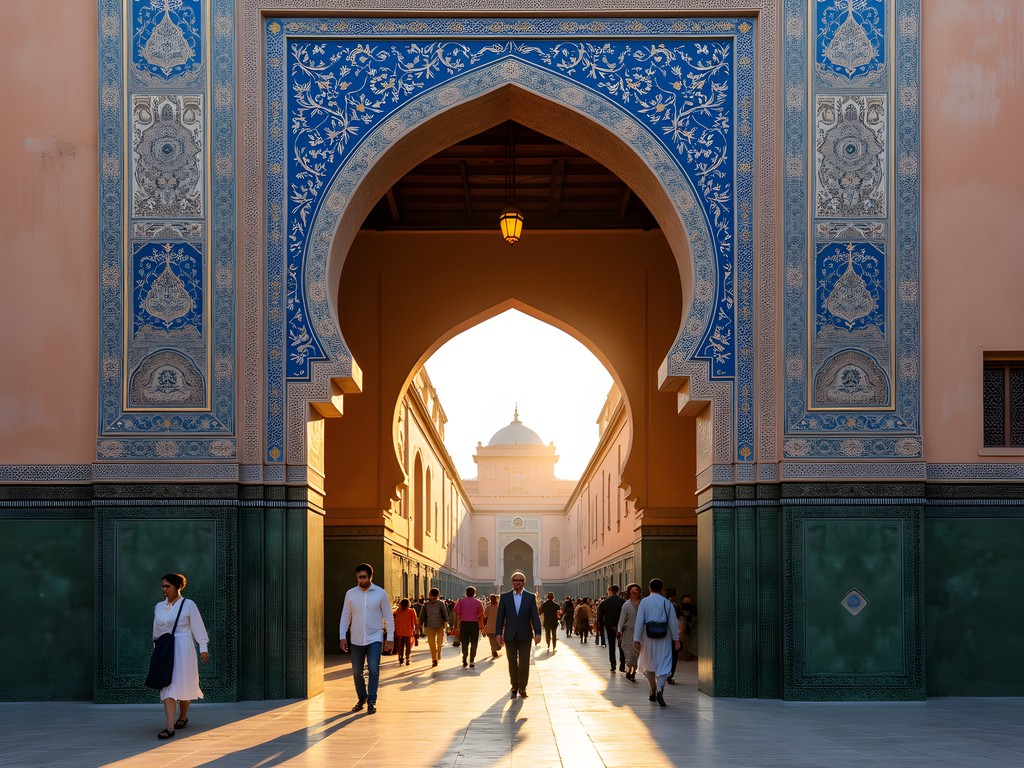
💡 Pro Tips
- Download Maps.me and save the Fez medina map offline before arriving
- Carry a reusable water bottle—plastic waste is a serious issue in historic areas
- Wear comfortable closed-toe shoes with good grip—ancient cobblestones are uneven and sometimes slippery
Finding Eco-Friendly Sanctuary: Where to Stay
Choosing accommodation in Fez requires balancing authenticity, comfort, and—for the environmentally conscious traveler—sustainability. After researching options that aligned with my values, I settled on a traditional riad within the medina walls. These centuries-old homes built around central courtyards represent ingenious climate-adaptive architecture that predates modern air conditioning.
I stayed at Riad Rcif, a restored 17th-century home near Place Rcif that employs natural cooling methods: thick walls that regulate temperature, strategic ventilation, and a central fountain that humidifies dry air. My room cost approximately 450 dirhams ($45 USD) per night—remarkable value considering the hand-crafted zellige tilework and carved cedar ceilings that surrounded me. The riad's family owners have implemented water conservation systems and source ingredients from local markets, minimizing their carbon footprint.
For those on tighter budgets, Funky Fes hostel offers dorm beds from 120 dirhams ($12 USD) with surprising eco-credentials: solar water heating, recycling programs, and community-based tours that economically benefit local families. I spent an afternoon in their rooftop garden chatting with travelers from Colombia and New Zealand about sustainable tourism practices.
While luxury seekers might prefer Palais Amani or Hotel Sahrai on the medina's edge, I found staying deep within the ancient city walls provided an immersive experience that no modern hotel could match. Falling asleep to distant prayers and awakening to rooftop views across the medieval skyline connected me to Fez's rhythms in ways impossible from outside the medina.

💡 Pro Tips
- Request a room away from the central courtyard if you're a light sleeper—riads can echo
- Pack earplugs as early morning calls to prayer start before dawn
- Ask your riad host to arrange a licensed guide for your first day—they're worth the investment
Navigational Strategies: Embracing the Chaos
"You will get lost in the medina. This is not a question," my riad host Youssef assured me with a knowing smile on my first morning. Rather than fighting this inevitability, I learned to embrace it as part of Fez's charm—a strategy that transformed potential frustration into discovery.
The medina's layout defies conventional navigation: streets narrow unexpectedly, landmarks appear identical, and Google Maps struggles with the dense urban fabric. Instead of rigid itineraries, I adopted a more fluid approach using the medina's five primary sections as rough guidelines.
I started each morning with a specific destination—the famous tanneries or Kairaouine Library—but allowed myself to wander freely en route. This flexibility led to my most memorable experiences: discovering a hidden workshop where craftsmen create musical instruments from cedar and camel bone, or being invited to share mint tea with a family celebrating their son's acceptance to university.
For practical orientation, I relied on a combination of methods. First, I identified distinctive shops or architectural features at major intersections. Second, I used the medina's natural topography—it slopes downhill toward Oued Fes (Fez River), providing a constant directional reference. Third, I carried a small compass which proved invaluable when narrow alleyways blocked views of landmarks.
When truly disoriented, I found that local children would guide me to main thoroughfares for a few dirhams. However, I avoided following unsolicited guides who approached me, as they often lead tourists to commission-based shops rather than requested destinations. Instead, when needed, I ducked into cafés to reorient myself while enjoying fresh orange juice or Moroccan coffee—a welcome respite from the sensory intensity outside.
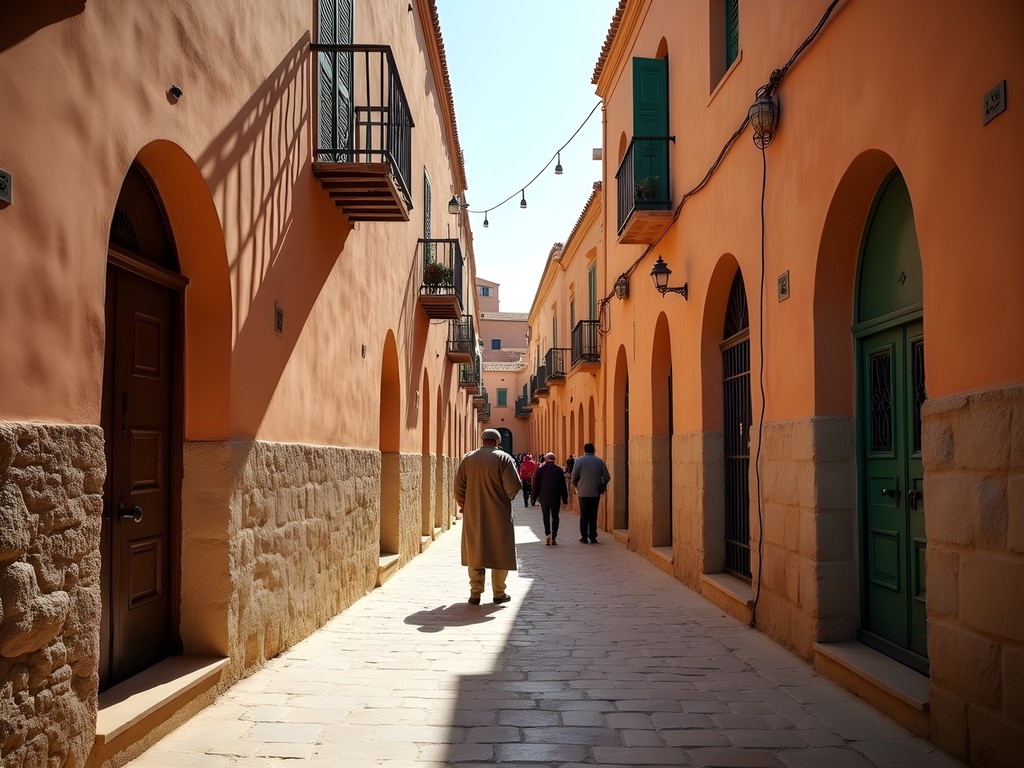
💡 Pro Tips
- Look for the five main mosque towers as orientation landmarks visible from most rooftops
- Remember shop details rather than street names—most alleyways are unnamed
- When lost, always walk downhill to reach the main thoroughfares near the river
Artisanal Traditions: Sustainable Craftsmanship
As an environmental scientist, I'm particularly drawn to traditional production methods that minimize ecological impact while preserving cultural heritage. Fez's artisanal economy represents a remarkable circular system that has functioned sustainably for centuries—something our modern economies desperately need to relearn.
The medina houses over 11,000 historic workshops organized by craft guilds, each clustered in designated quarters. I spent my second morning exploring the dyers' souk, where artisans create vibrant natural dyes from local plants, minerals, and sometimes surprising ingredients like pomegranate rinds and indigo leaves. Unlike modern synthetic dyes that contaminate waterways, these traditional methods produce minimal toxic waste.
At Chouara Tannery—the oldest leather tannery in the world—I witnessed a process largely unchanged since medieval times. While the ammonia smell from pigeon droppings (used as natural softening agents) is admittedly overwhelming, I was fascinated by how workers recycle every element: water is reused through a series of vats, leather scraps become smaller goods, and natural mordants fix dyes without harsh chemicals. The rooftop viewpoint requires a small tip, but provides the best perspective on this ancient industry. Many shops offer mint sprigs to combat the powerful odors—I suggest accepting this traditional remedy!
For those interested in supporting sustainable craftsmanship, I recommend visiting cooperatives rather than tourist shops. At Association Fes-Saiss, women artisans create exquisite embroidery using skills passed through generations. I purchased a hand-embroidered table runner directly from its creator—connecting me to both the artisan and centuries of textile tradition.
What struck me most was how these ancient trades embody circular economy principles that modern sustainability advocates champion today: locally sourced materials, zero-waste production, intergenerational knowledge transfer, and products designed for longevity rather than obsolescence.

💡 Pro Tips
- Visit workshops early morning when artisans are most active and before tourist crowds arrive
- Always ask permission before photographing craftspeople—many appreciate a small tip
- Quality crafts have imperfections that show human handiwork—perfect items are likely mass-produced
Culinary Exploration: From Markets to Meals
The medina's food landscape offers a window into Morocco's sustainable agricultural traditions—something I explore professionally through climate adaptation research. Here, food miles are measured in footsteps rather than kilometers, with produce often arriving from nearby farms the same morning it's sold.
I started my culinary journey at the R'cif Market near the eastern edge of the medina. Unlike tourist-oriented spice shops, this is where local families shop daily. Vendors arrange seasonal produce in meticulous pyramids: spring brought strawberries, fava beans, and wild asparagus harvested from the Middle Atlas foothills. The market operates on minimal packaging—shoppers bring their own bags, and vendors wrap purchases in paper or palm leaves rather than plastic.
For breakfast, I followed locals to hole-in-the-wall bakeries for khobz (round Moroccan bread) still warm from community ovens. Paired with fresh-pressed olive oil from the region and honey from Atlas Mountain beekeepers, this simple meal connected me directly to Fez's agricultural hinterland.
Lunch typically meant street food: harcha (semolina flatbread) filled with wild thyme and cheese, or bissara (fava bean soup) topped with olive oil and cumin. For those concerned about food safety, I found that busy stalls with high turnover generally offer the freshest options.
Dinner deserves special attention in Fez. Rather than dining at tourist restaurants, I booked a cooking class at Café Clock, where I learned to prepare vegetable tagine using clay cooking vessels that require minimal energy while maximizing flavor. The tagine pot creates a self-basting environment through its conical design—ingenious culinary technology that hasn't needed improvement for centuries.
On my final evening, I splurged on dinner at a family-run riad restaurant, where the multi-course feast featured preserved lemons from last season's harvest and vegetables grown on the family's small plot outside the city. This meal exemplified what climate-conscious eating can be: seasonal, local, minimally processed, and deeply connected to place.
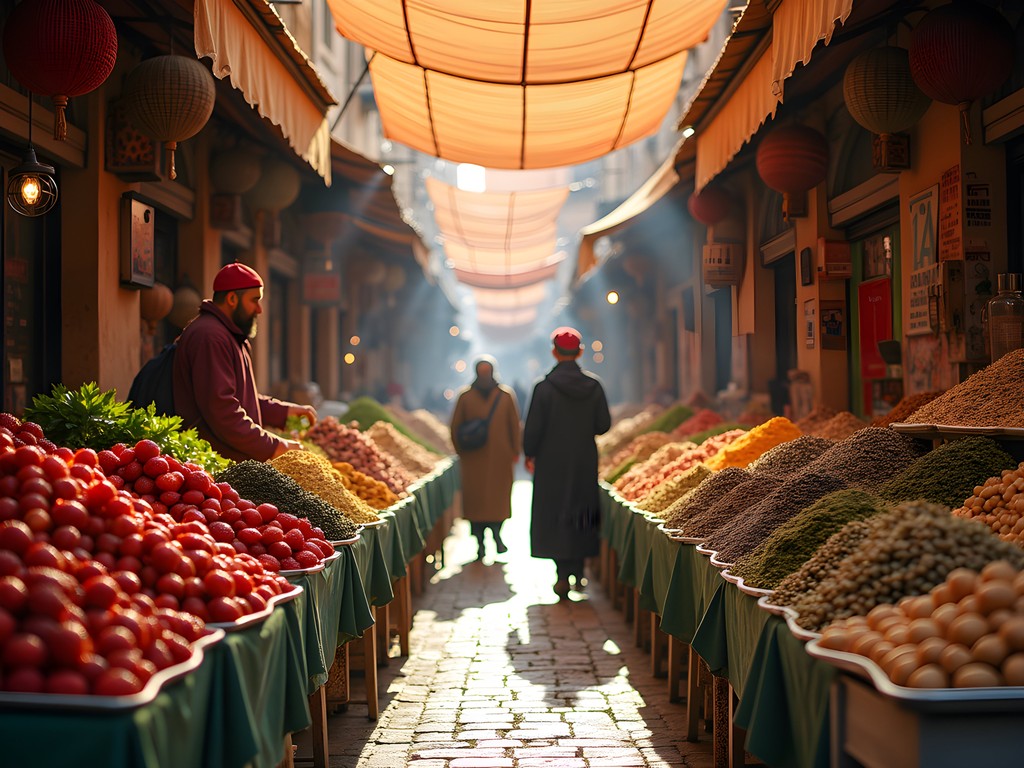
💡 Pro Tips
- Eat where locals eat—restaurants with menus in multiple languages often serve watered-down versions of Moroccan cuisine
- Look for the 'Terroir du Maroc' label on products, indicating traditional production methods
- Try sardines—Morocco's sustainable fisheries program is a model for Mediterranean conservation
Cultural Immersion: Beyond the Tourist Trail
While Fez's material heritage captivates most visitors, I found its living cultural traditions equally compelling. As someone who studies how communities adapt to environmental change, I was particularly interested in how Fassi culture has maintained continuity while evolving over twelve centuries.
My most meaningful experiences came through connections with locals rather than visits to monuments. Through my riad host, I arranged to join a family for Friday couscous—a weekly tradition where extended families gather after mosque prayers. As we shared the communal dish (eaten with the right hand from a central platter), three generations discussed everything from climate change's impact on local agriculture to their favorite soccer teams. My basic Darija (Moroccan Arabic) phrases earned appreciative laughter and prompted enthusiastic language lessons from the children.
For spiritual insights, I visited zawiyas (Sufi lodges) rather than only the famous mosques closed to non-Muslims. At the Zawiya of Sidi Ahmed al-Tijani, I was welcomed to observe the rhythmic chanting of dhikr ceremonies where devotees remember God through repetitive phrases and movements—a form of meditation that practitioners say connects them to something greater than themselves.
To understand contemporary Fassi culture beyond traditions, I spent evenings at Café Clock, where university students gather for storytelling events and fusion music performances. I recorded several traditional stories using my digital voice recorder, which local storytellers encouraged as a way to preserve oral traditions increasingly threatened by digital entertainment.
Perhaps my most unexpected cultural exchange occurred during an impromptu yoga session on my riad's rooftop. My morning practice attracted curious glances from neighboring rooftops, eventually leading to an invitation to teach basic poses to a group of local women. Despite language barriers, we connected through movement and shared laughter—a reminder that human connection transcends verbal communication.

💡 Pro Tips
- Learn basic greetings in Darija (Moroccan Arabic)—even simple phrases open many doors
- Respect prayer times—the medina quiets five times daily during calls to prayer
- Accept invitations for tea when they seem genuine—some of my best conversations happened this way
Final Thoughts
As my weekend in Fez drew to a close, I found myself reflecting on how this medieval city embodies principles we desperately need in our modern world: walkable neighborhoods, circular economies, climate-adaptive architecture, and intergenerational knowledge transfer. Getting lost in the medina isn't just a physical experience—it's a metaphor for the disorientation that leads to discovery, both external and internal. The labyrinth of Fez doesn't just preserve the past; it offers wisdom for creating more sustainable, connected futures. As climate change threatens communities worldwide, places like Fez remind us that human ingenuity has created resilient urban systems before—and can do so again. Whether you come for the architecture, the craftsmanship, or the cuisine, you'll leave with something more valuable: a glimpse of how tradition and adaptation have danced together for twelve centuries in this remarkable living museum. So pack light, bring an open mind, and prepare to lose yourself in order to find something unexpected. The medina awaits.
✨ Key Takeaways
- Embrace getting lost as part of the experience rather than fighting it
- Support traditional craftspeople by purchasing directly from workshops
- The medina's ancient design demonstrates sustainable urban planning principles still relevant today
- Cultural connections provide deeper insights than monument-hopping
📋 Practical Information
Best Time to Visit
Spring (March-May) and Fall (September-November)
Budget Estimate
$45-60 per day including accommodation, food, and activities
Recommended Duration
Minimum 2 full days, ideally 3-4
Difficulty Level
Moderate

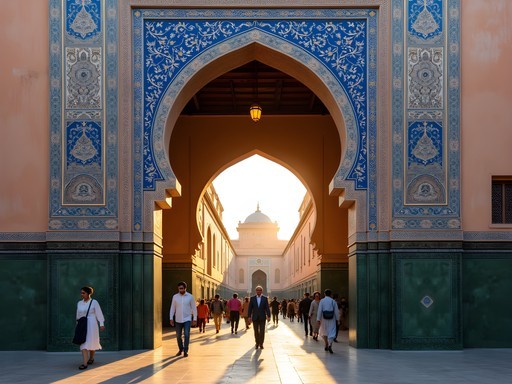
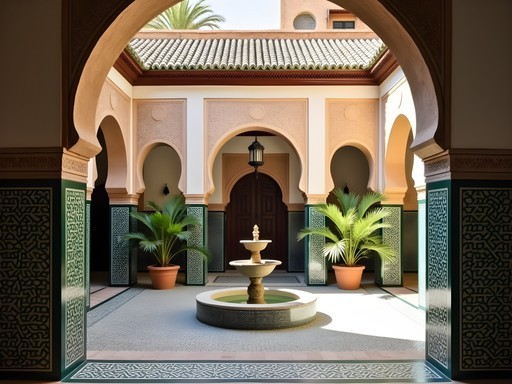
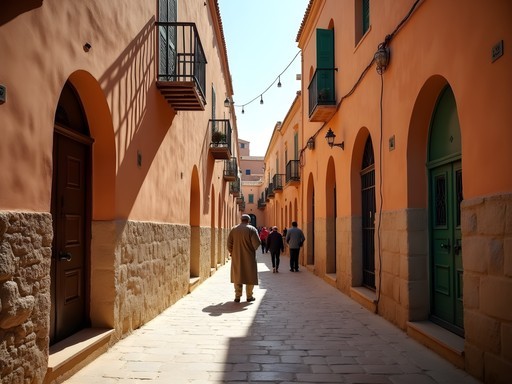
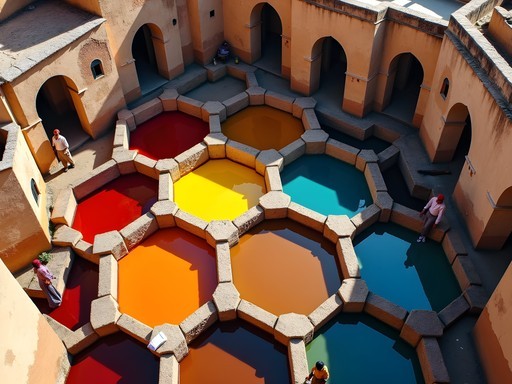




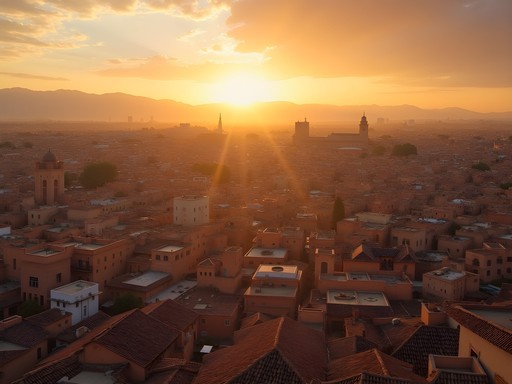
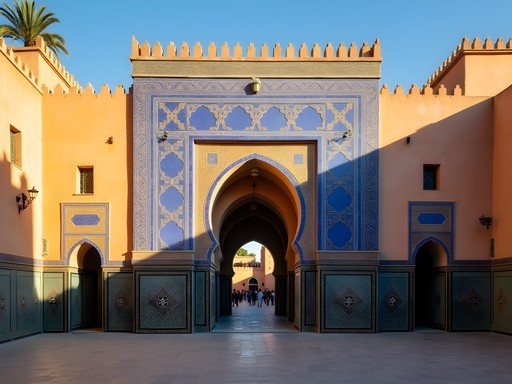
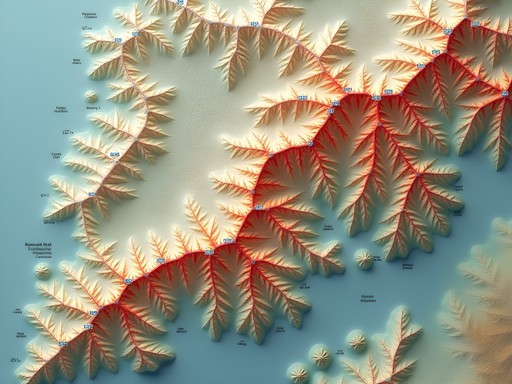





Comments
backpackguide3271
Just got back from Fez last week! Your tip about embracing getting lost was the best advice. We tried following Google Maps for the first day and got frustrated. Once we just accepted the maze and started using landmarks instead, everything became way more enjoyable. The tanneries smell was intense though - wish I'd brought a stronger scarf to cover my nose. We stayed at an eco-riad called Dar Bensouda which had amazing sustainability practices - they collected rainwater and used local organic products for everything. Definitely recommend spending at least 3 days there to really soak it all in without rushing.
wanderlustking
Great post! How did you handle the persistent touts? They nearly ruined my experience in Marrakech last year.
Adam Lopez
I found Fez actually less aggressive than Marrakech in that regard. A firm but polite 'La, shukran' (No, thank you) while continuing to walk usually worked. The further you get from the main tourist areas, the less this happens too.
Taylor Moreau
Having conducted business trips to Fez regularly over the past decade, I'd recommend supplementing your excellent guide with one practical tip: arrange transportation through your accommodation when first arriving. The area outside Bab Boujloud can be overwhelming for first-time visitors, particularly when managing luggage. Most riads will arrange a porter with a cart to transport your belongings through the narrow streets. Additionally, I've found that carrying a pocket compass provides a simple backup when digital navigation fails in the medina's deepest sections. The metal roofing in certain areas can interfere with GPS signals, making traditional navigation skills surprisingly relevant in this ancient setting.
waveguide
Is it safe for solo female travelers?
tripguy1269
Going there next month! Saving this post for reference. Thanks!
Hunter Thompson
You're going to have an amazing time! Quick tip: bring cash as many small shops don't take cards, and always negotiate prices - start at about 40% of the first offer!
wanderphotographer
OMG that shot of the copper artisans with the light streaming through the workshop windows is INCREDIBLE! What time of day did you visit to catch that perfect lighting? Heading there in November and want to recreate this!
Adam Lopez
Thanks! That was around 2-3pm when the sun hits just right in that particular alley. The coppersmiths in that section are used to photographers - just buy something small if you spend time shooting there.
Douglas Bradley
Adam, your analysis of the medina's organic urban design is spot on. What fascinates me most is how this medieval infrastructure continues to function in modern times without significant modification. During my research visit last spring, I documented how the medina's narrow streets naturally create cooling microclimates - a form of passive climate control our modern cities could learn from. The absence of vehicles also creates a unique pedestrian experience that forces genuine human interaction. One thing I'd add to your eco-friendly accommodations section is that many riads now incorporate traditional water conservation techniques that have been used in Morocco for centuries. This blend of historical wisdom with sustainability is something more destinations should embrace.
travelfan
Going there next month! Did you find a guide necessary or can you really navigate it alone?
backpackguide3271
Not the author but I went solo last year. Hired a guide first day to get oriented, then explored alone the next two days. Definitely download maps.me offline map before you go!
travelfan
Thanks for the tip! Will definitely do that.
explorestar
Those narrow alleys are no joke! Got lost for 3 hours there last year and ended up discovering the best leather shop ever. Sometimes getting lost is the best part!
Taylor Moreau
Couldn't agree more. In my experience, the unplanned discoveries in Fez often become the most memorable parts of the journey. Did you purchase anything from that leather shop?
explorestar
A beautiful handmade messenger bag! Still use it daily, 2 years later.
Douglas Bradley
Excellent analysis of Fez's medina, Adam. What fascinates me most about this UNESCO site is how it represents an unbroken chain of urban planning that predates most European cities. I'd add that visiting during shoulder season (October or April) provides the ideal balance between comfortable temperatures and manageable crowds. The section on sustainable craftsmanship resonated with me - I spent three days documenting the zellige tile makers near Bab Rcif and was struck by how their techniques remain virtually unchanged since the 14th century. For those concerned about navigating, remember that getting lost is part of the experience, but the medina naturally funnels you toward either Bab Boujloud or R'cif Square eventually.
coffeeexplorer
Douglas, did you visit any of the community cooperatives? I heard there's one where women are reviving traditional embroidery techniques.
Douglas Bradley
Yes! The Ain Nokbi Women's Cooperative is doing remarkable work preserving traditional Fassi embroidery. It's a bit outside the medina but absolutely worth the trip. They offer workshops too if you have time.
Venture X
Premium card with 2X miles, $300 travel credit, Priority Pass